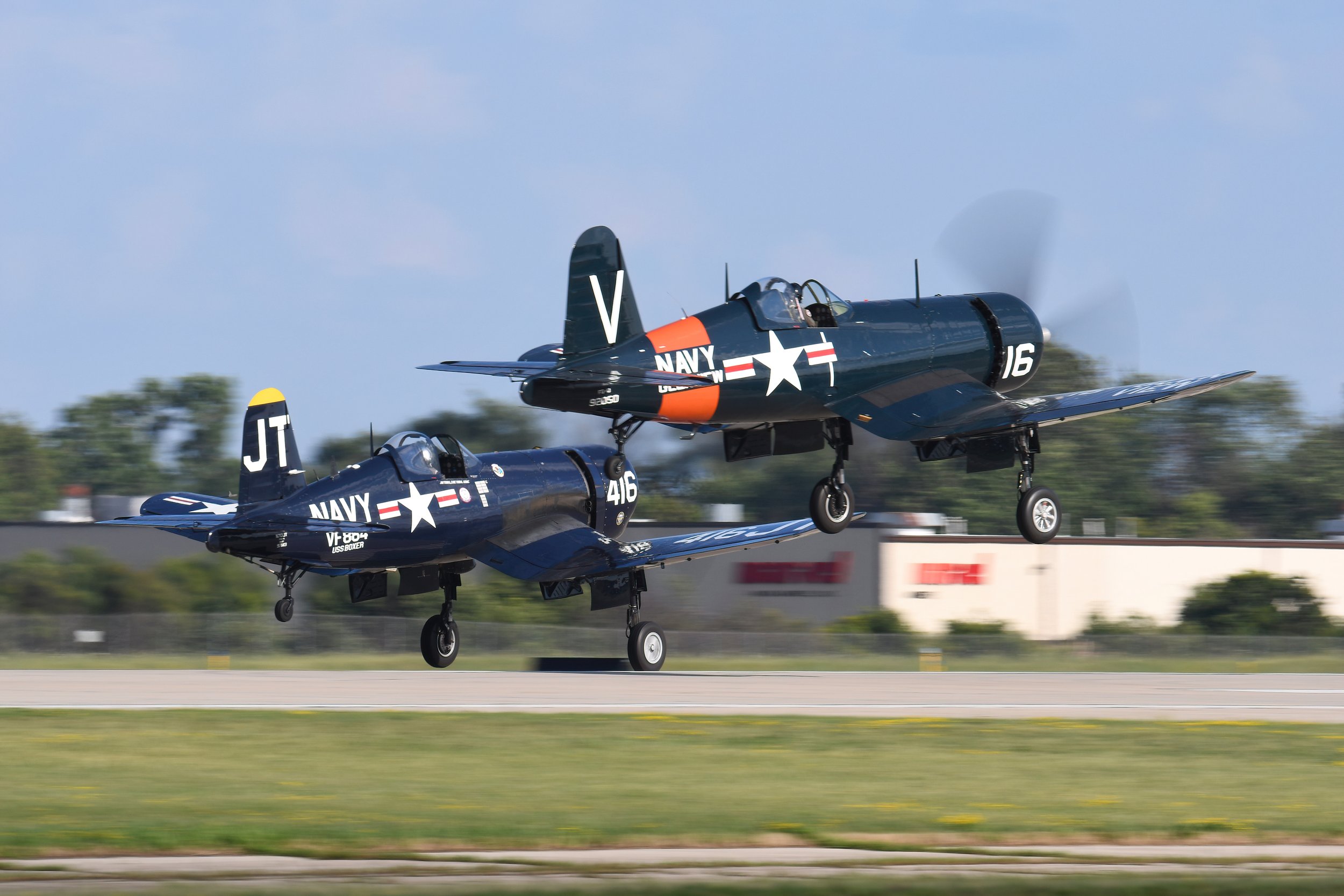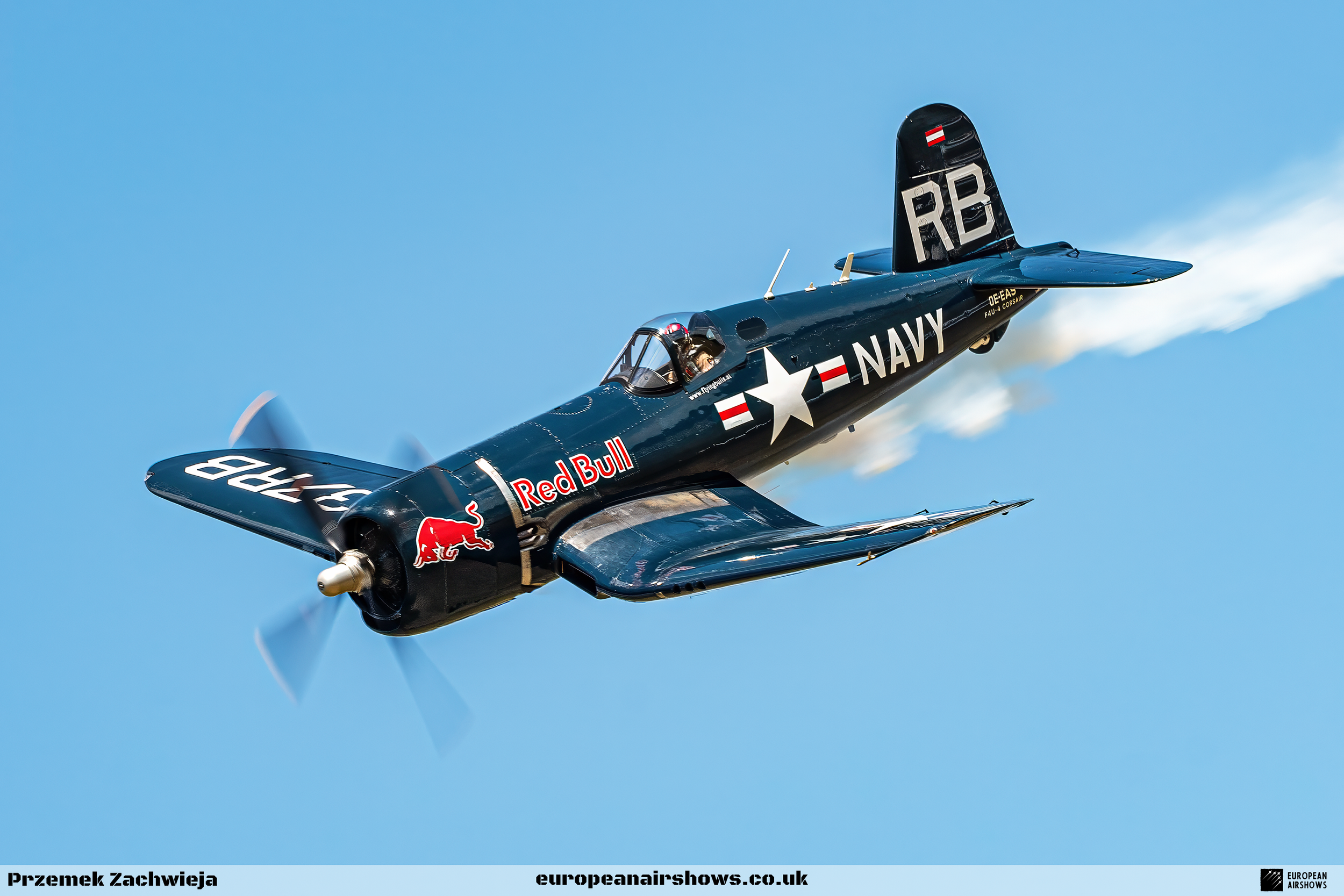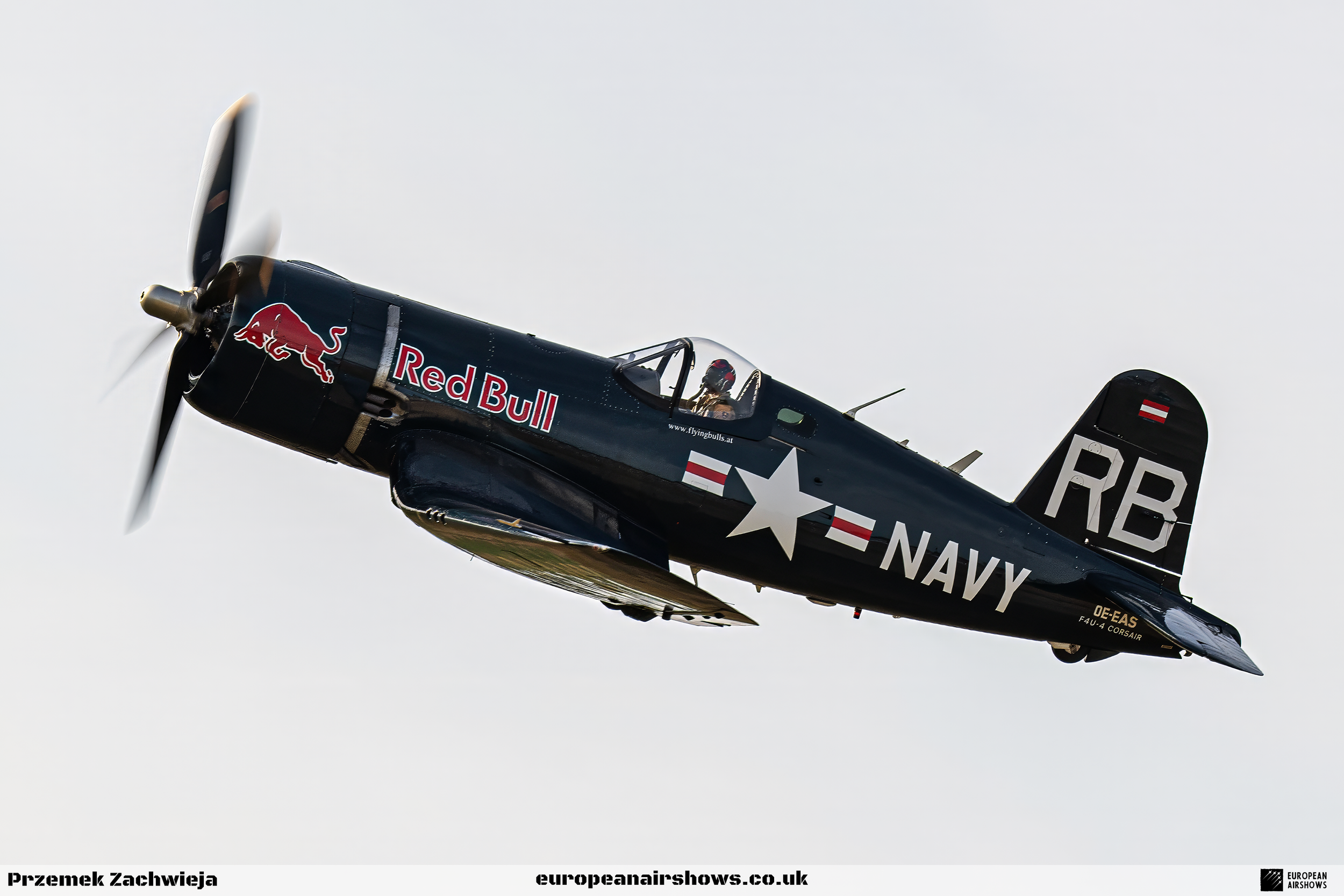
May 29 / Vought F4U Corsair first flight
First Flight 29 May 1940
Vought F4U Corsair
The Vought F4U Corsair stands as one of the most iconic and revered fighter aircraft of World War II and the Korean War, renowned for its distinctive design, exceptional performance, and combat prowess. Its rich history, spanning multiple decades and operational theatres, showcases its enduring legacy as a formidable fighter aircraft.
Origins and Development (1938-1940):
The genesis of the Vought F4U Corsair can be traced back to 1938 when the U.S. Navy issued a requirement for a high-performance carrier-based fighter aircraft. Vought Aircraft Industries, under the leadership of designer Rex Beisel, embarked on the design process to meet the stringent specifications laid out by the Navy.
The first prototype of the Corsair, designated XF4U-1, took its maiden flight on May 29, 1940, marking the beginning of a transformative chapter in the evolution of naval aviation. The aircraft’s distinctive gull-wing design, powerful engine, and advanced features set it apart from contemporary fighter aircraft of the time.
Operational Debut and Combat Success (1942-1945):
The Vought F4U Corsair entered operational service with the U.S. Navy and Marine Corps in 1942, where it quickly demonstrated its combat effectiveness and superiority. The Corsair’s speed, range, and firepower made it a formidable adversary in air-to-air combat and ground attack missions.
The Corsair achieved notable success in the Pacific Theater of World War II, where it became synonymous with the Marine Corps’ island-hopping campaigns. Its performance in aerial combat against Japanese fighters and ground targets solidified its reputation as a premier fighter aircraft of the era.
Variants and Evolution:
The Vought F4U Corsair underwent several variant upgrades and modifications to enhance its combat capabilities and operational versatility. Variants such as the F4U-1D, F4U-4, and F4U-5 introduced improvements in engine power, armament, and avionics, further enhancing the aircraft’s performance in combat missions.
The Corsair’s adaptability led to the development of specialized variants, including night fighters, reconnaissance aircraft, and carrier-based versions, showcasing its versatility in meeting diverse operational requirements.
Global Reach and Post-World War II Service:
Following World War II, the Vought F4U Corsair continued to serve with numerous air forces around the world, including France, Britain, and various Latin American countries. Its combat-proven reputation and enduring reliability made it a sought-after aircraft for post-war military operations and conflicts.
The Corsair’s participation in the Korean War further solidified its combat legacy, where it operated in close air support, interdiction, and air superiority roles against enemy forces. Its performance in the conflict reaffirmed its status as a potent and versatile fighter aircraft.
Retirement and Legacy:
The Vought F4U Corsair gradually phased out of frontline service in the 1950s as more advanced jet-powered fighters became prevalent. Despite its retirement from active duty, the Corsair remained a popular choice for air racing and aerial demonstrations and a symbol of aviation heritage.
The Corsair’s enduring legacy endures in the hearts of aviation enthusiasts, veterans, and historians worldwide, symbolizing the courage, innovation, and technological advancements of its era. Its distinctive appearance, combat record, and lasting impact on military aviation secure its place as a legendary and revered fighter aircraft in aviation history.
In conclusion, the Vought F4U Corsair’s comprehensive history epitomizes its status as a groundbreaking aircraft that reshaped the course of naval aviation. From its inception to its retirement, the Corsair remains a testament to innovation, performance, and operational excellence in the realm of fighter aircraft.
Corsair Facts
Gull-Wing Design: The Vought F4U Corsair is renowned for its distinctive gull-wing design, which provided clearance for the massive propeller while keeping the landing gear short and sturdy, contributing to its unique appearance and aerodynamic efficiency.
Speed Demon: The F4U Corsair was one of the fastest propeller-driven fighters of its time, capable of reaching speeds exceeding 400 mph, making it a formidable adversary in air-to-air combat and reconnaissance missions.
Combat Effectiveness: The Corsair earned a fearsome reputation for its combat effectiveness during World War II, particularly in the Pacific Theater, where its superior speed, firepower, and range allowed it to excel in engagements against Japanese aircraft.
Marine Corps’ Ace-Maker: The Corsair was instrumental in producing numerous aces for the U.S. Marine Corps, with pilots like Gregory “Pappy” Boyington achieving remarkable success and earning accolades while flying the Corsair.
Carrier Operations: The F4U Corsair was initially designed for carrier-based operations, but its challenging landing characteristics led to its primary deployment from land-based airstrips, where its performance and capabilities shone in various combat roles.
Long Range: The Corsair’s impressive range made it well-suited for extended missions over vast expanses of the Pacific Ocean, enabling it to provide crucial air support and conduct reconnaissance deep behind enemy lines.
Variants and Upgrades: The F4U Corsair underwent several variants and upgrades throughout its service life, with enhancements in engine power, armament, and avionics to ensure it remained a potent and adaptable fighter in evolving combat environments.
Bent-Wing Bird: The Corsair earned the nickname “Bent-Wing Bird” due to its distinctive wing configuration, which not only provided practical benefits but also made it instantly recognizable on the battlefield and in the skies.
International Service: The Corsair saw service with various allied nations post-World War II, including France, Britain, and New Zealand, where it continued to demonstrate its combat capabilities and reliability in conflicts and peacekeeping missions.
Aerial Racing Success: Beyond its military service, the Corsair found success in the realm of aerial racing and airshows, where its speed, agility, and iconic design captivated audiences and showcased its enduring appeal as a legendary aircraft in aviation history.


















